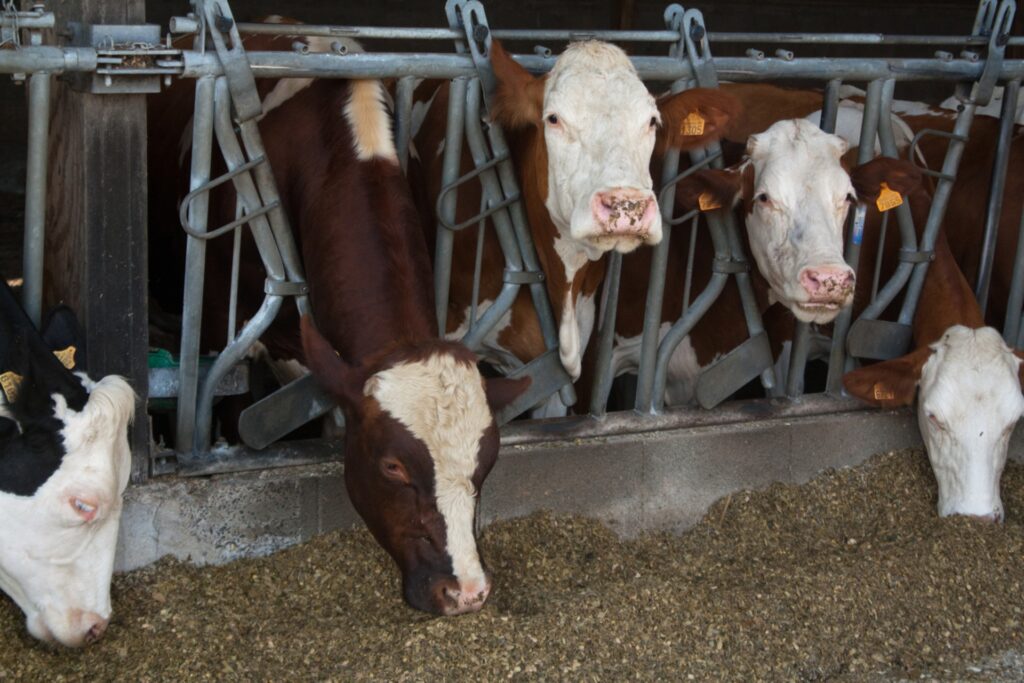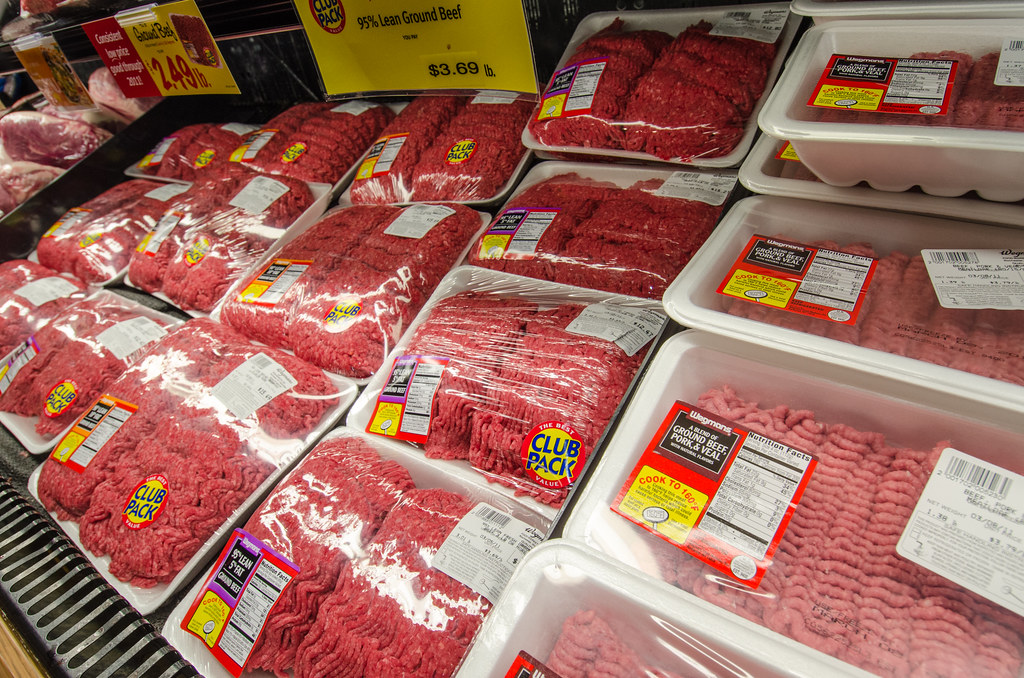This article is part of a series called Five Reasons Local Meat is Better. It describes Reason #5.
Like other businesses, the beef industry wants to reduce expenses and increase profits. By controlling costs, meat producers of all sizes can avoid pricing products beyond what the market will bear. Fixed costs such as barns, processing equipment, and refrigerators can be considerable. There are also variable costs such as feed, fertilizer, and fuels.
Larger meat producers have economies of scale on their side since they can spread their costs over a larger number of cattle. Because they buy more, these businesses also have greater purchasing power and can negotiate better prices and lower rates. Yet, smaller meat producers can reduce or eliminate entire categories of cost, such as antibiotic-containing grain-based feeds and transportation. Local meat producers can also sell directly to consumers.
Let’s take a closer look.

Animal Feed and Antibiotics
Local meat producers who feed their cows grass and keep them in smaller herds likely need to buy less animal feed with antibiotics. There’s a cost to pasture management, of course, but healthy grass usually just needs soil, sunshine, rain, and manure. Rotational grazing helps, too. In other words, grass doesn’t need the fertilizers, harvesters, and other large sources of cost associated with grain production. Because local herds are smaller in size and the cows have more room than feedlot cattle, there’s also a likely reduced risk of the type of communicable diseases that farmers and ranchers fight with antibiotics. These cattle are also likely to have reduced veterinary expenses because of less health issues.

Transportation Costs
Cattle that are shipped to large feedlots also incur greater transportation costs. Most of the trucks and trains in use are diesel-powered, and the cost of diesel fuel reached record prices in 2022. In the United States, cattle that are raised far away from big feedlots are especially expensive to transport because of the long distances. There’s also a cost to maintaining the trucks and trains that transport cattle.

Eliminating the Middle Man
In addition to reducing or eliminating transportation costs, local meat producers can also cut out the middle man: the supermarkets and distributors who sell meat products. Even when these middle men buy meat in large volumes to get a discount, they still apply a markup and pass it along in the price that consumers pay. Meat that doesn’t travel from farm to feedlot to supermarket avoids these secondary costs, and consumers who travel to a farm or farm store typically get a product that uses fewer packaging materials such as labels and Styrofoam.
About This Series
This article is part of a series called Five Reasons Why Local Meat is Better. Here is the full list of articles.
- Better nutritional value
- Healthier, well-cared for animals
- Sounder agricultural practices
- Greater consumer value
- Lower costs
Thank you for reading them.